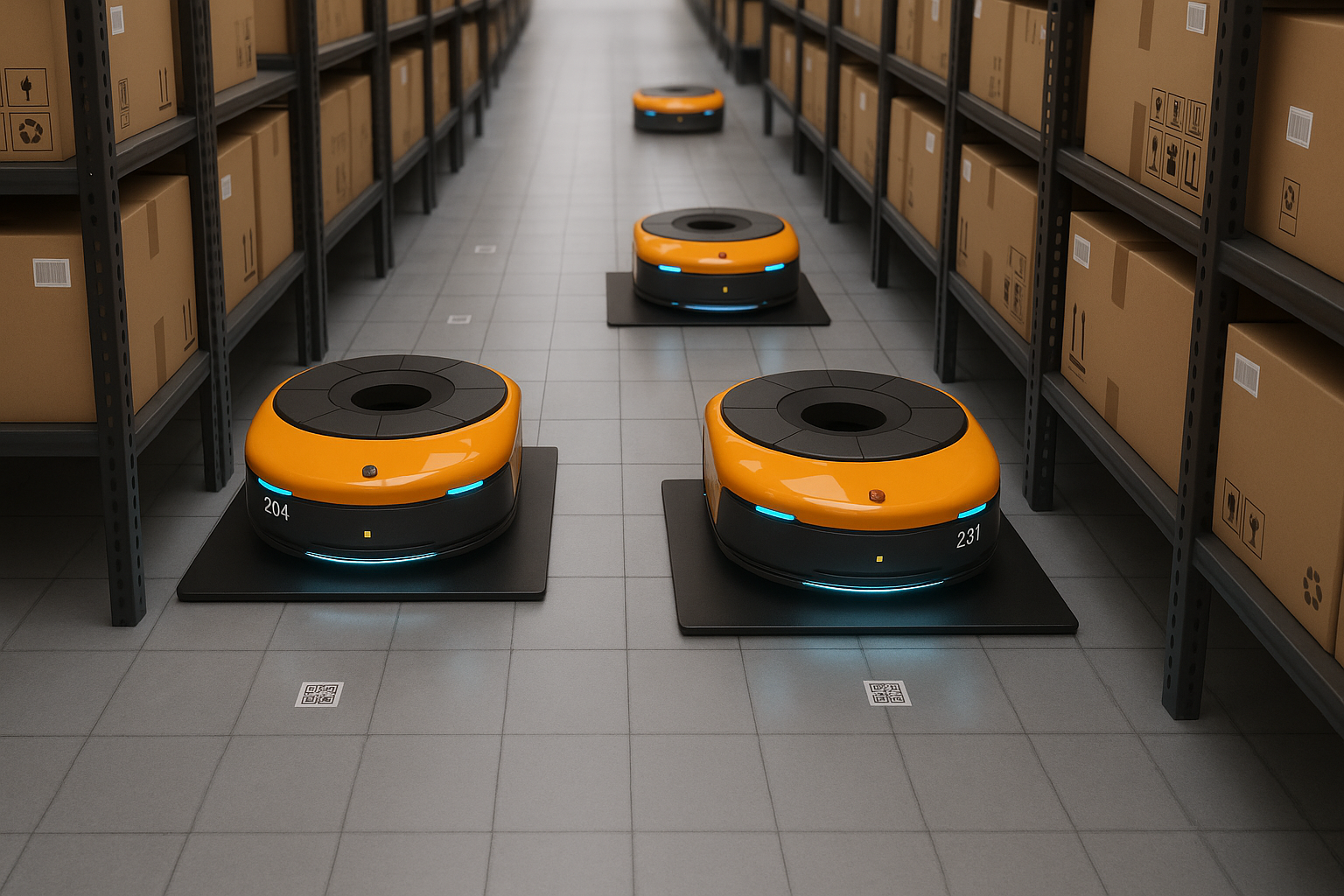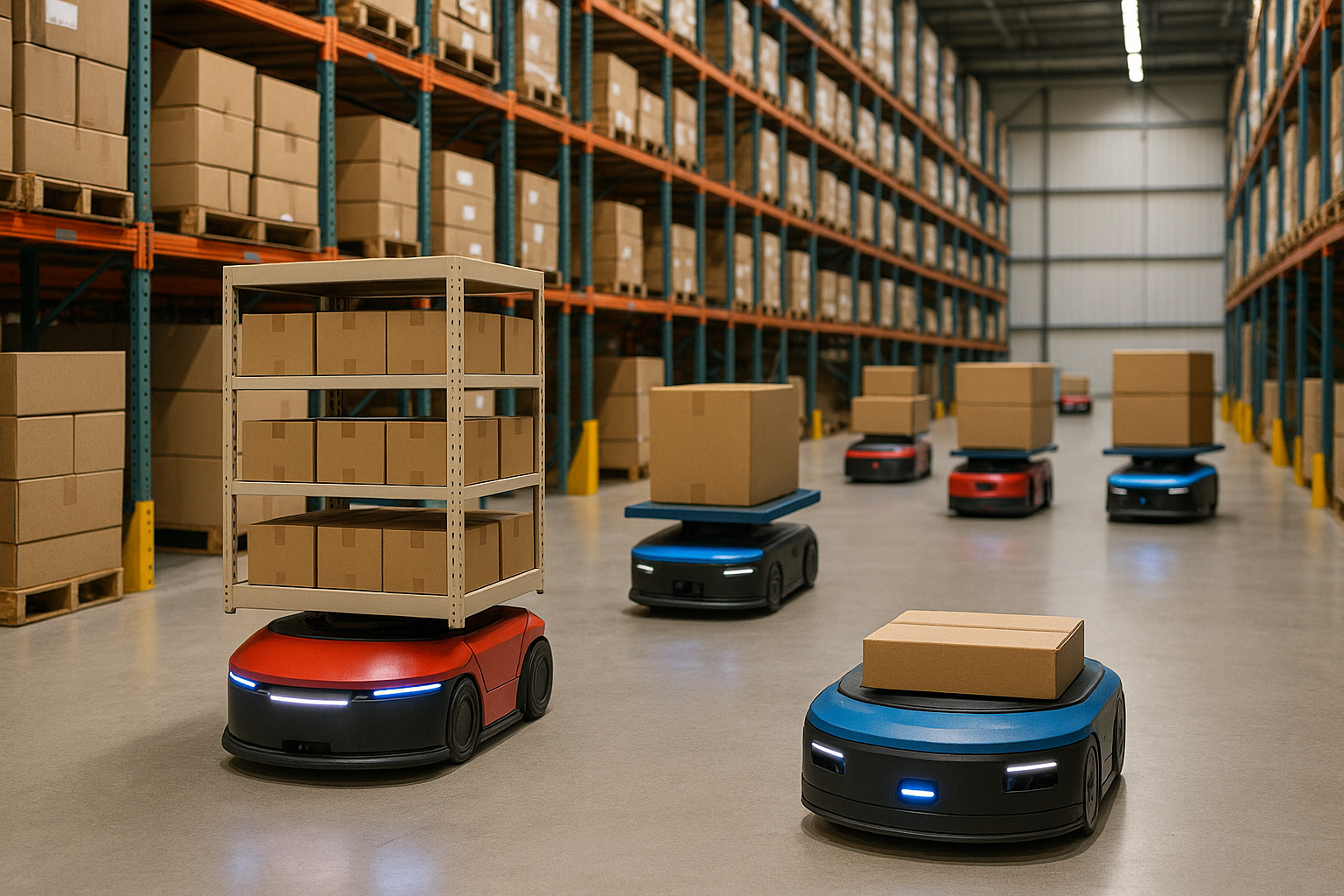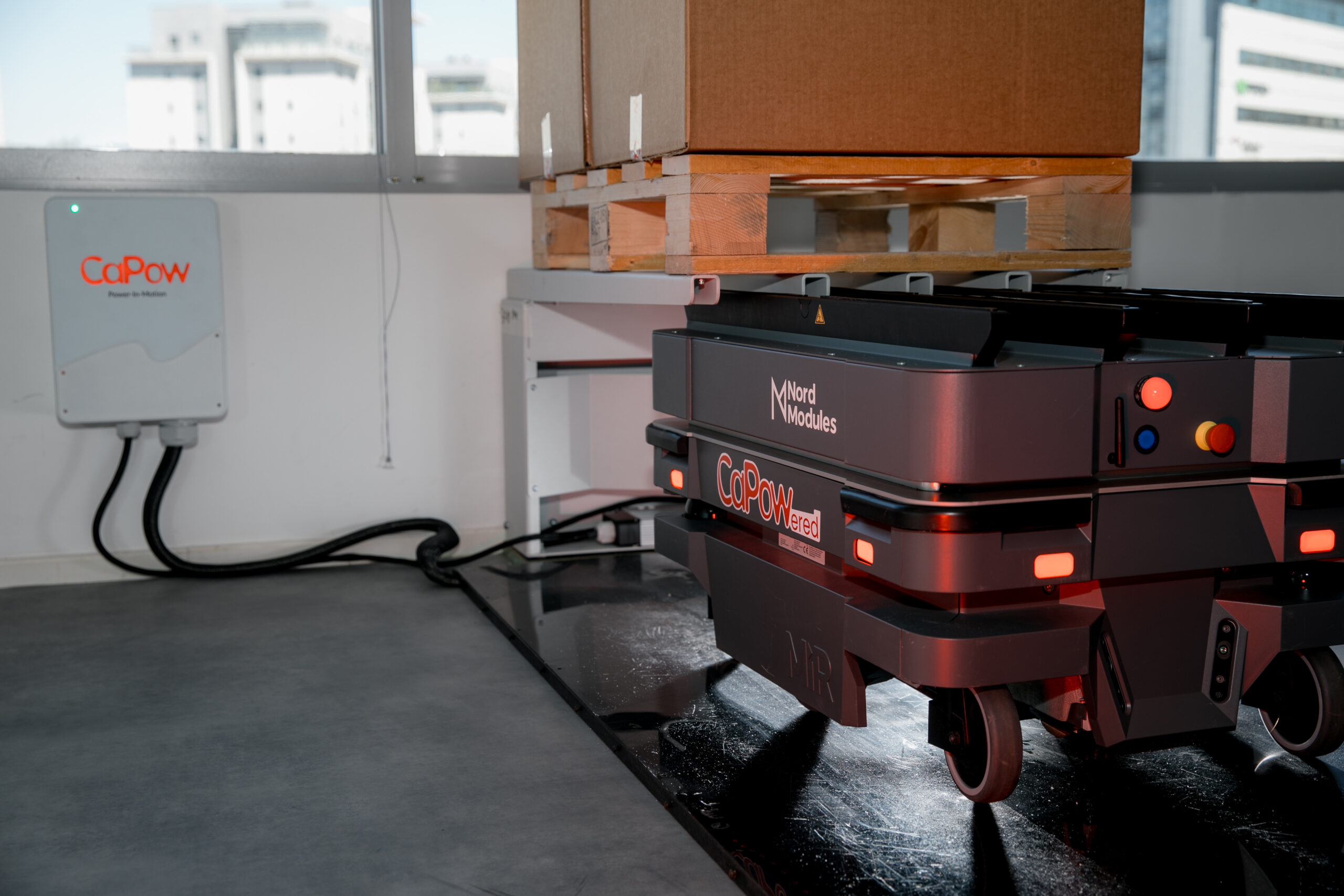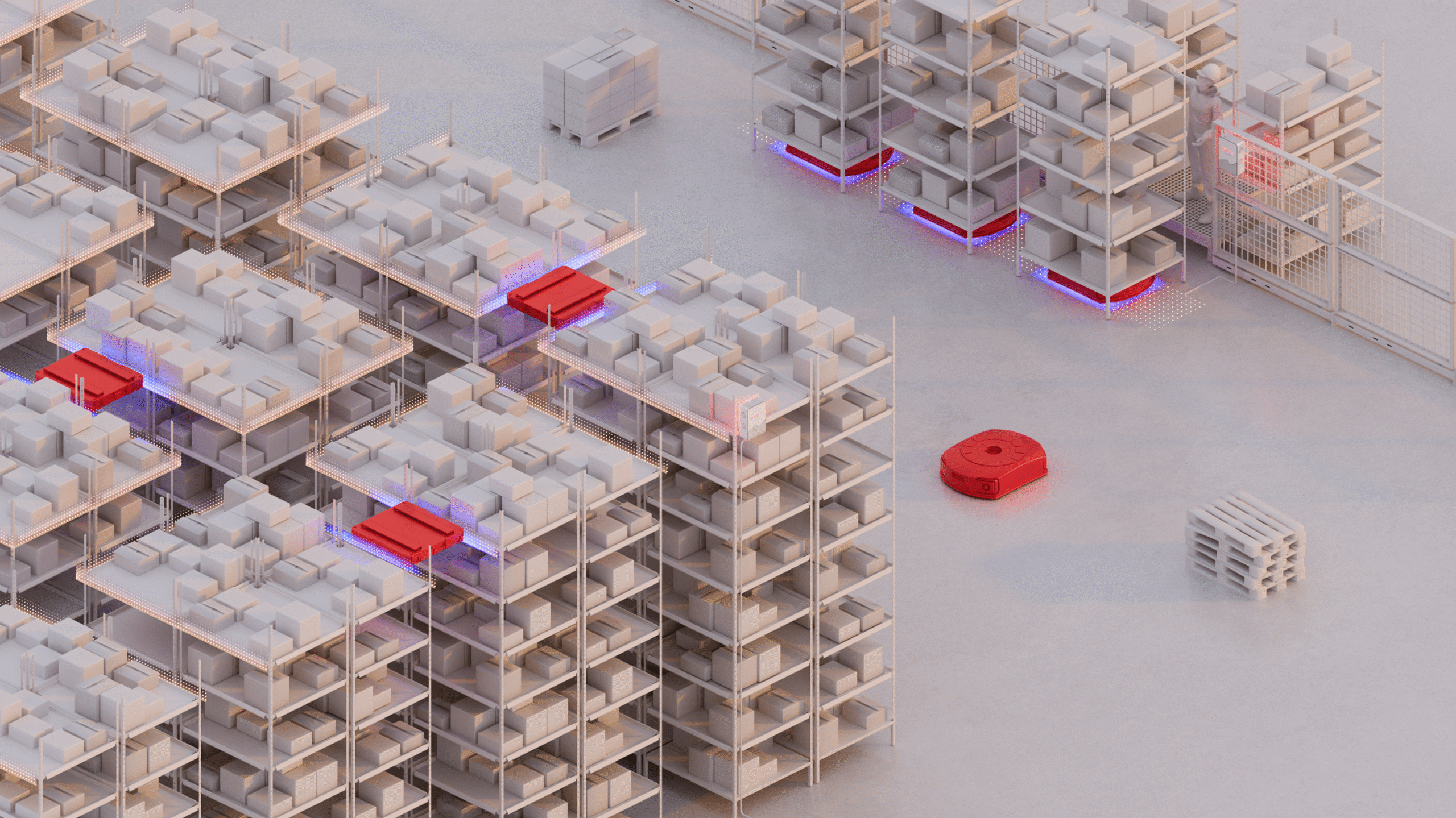It’s no secret that the warehouse and fulfillment world is racing to eliminate robot downtime. The question has moved from “If we can wirelessly charge AMRs?” to “How fast can we make them charge while they’re working?”.
In 2025, wireless and in-motion charging moved from the fringes to mainstream legitimacy.
With that momentum, CaPow’s Power‑in‑Motion™ is positioned to offer not just an alternative but a new paradigm.
1. The Market is Making a U‑Turn Toward Wireless Charging
AMR charging is booming. The global AMR charging station market once niche is now projected to exceed $200 million in 2025, with a CAGR over 25% through 2033.
Wireless AMR/AGV charging is emerging as the dominant form of power infrastructure in industrial settings.
In the AGV space, wireless charging systems are forecasted to hit USD 1.5 billion by 2033, growing at ~12.5% annually.
These aren’t hopeful projections; they reflect operators’ desperation to remove bottlenecks in uptime, maintenance, and battery logistics.
2. What Wireless (and In‑Motion) Charging Actually Offers
When we talk about wireless charging, we’re often referencing inductive transfer (or magnetic resonance variants), where energy is passed without contact.
But wireless charging – even the best inductive systems – can’t fully erase downtime. There are still alignment constraints, energy transfer limits, and charging speed challenges to address. That’s where in-motion solutions become compelling.
3. Why CaPow’s Power-in-Motion™ Actually Matters
Let’s be clear: no one has yet widely cracked the problem of true in-motion energy transfer at scale in high-volume G2P or AS/RS systems. No one but CaPow.
Here’s why CaPow’s approach cuts differently:
- Continuous energy while moving – not just during micro-stops or pads
- Plug- and dock-free – no need to design around charge zones
- Fleet downsizing – you don’t need extra “buffer robots” just to cover charging cycles
- Throughput-first architecture – instead of scheduling pauses, you design for constant flow
4. What’s Pushing Operators to Make the Leap Now
A few forces are creating the perfect storm for Power-in-Motion to move from theory to must-have:
- Warehouse densities are rising. Every inch of floor counts. Choosing between prime footprint for stocking or for docking is no longer acceptable.
- Labor and maintenance costs are rising. Every robot minute spent idle is money lost.
- Battery supply and capacity constraints are biting, especially for large fleets.
- Market expectations are changing. Investors and customers expect “always-on” automation. Anything less is a compromise.
And in 2025 specifically, more industrial leaders are calling for “dockless, plan-as-you-go power” in their RFPs. Wireless is a stepping stone – in-motion is the destination.
5. How to Evaluate a Charging Strategy (and Why Most Fail)
If you’re a decision-maker evaluating charging solutions, here’s a framework:
| Metric | What Good Looks Like | Why It Matters |
| Continuity of Supply | Minimal drops or blackout periods | Impacts throughput directly |
| Power density & speed | Enough watts to keep up with demand peaks | Avoids undercharge |
| Flexibility & scalability | Modular layout, no rigid zones | You evolve the factory over time |
| System cost efficiency | Less battery + no docks + low maintenance | Avoids rearranging the P&L |
| Real-world case success | Proof in deployment, not pilot-only | Reduces execution risk |
Many “wireless” systems fail because they treat power delivery as an afterthought overlaying charging stations, requiring perfect alignment, or being limited to low-duty robots. These constraints kill scaling.
6. Why There’s No Direct Competition Right Now
Let’s be upfront: you’ll see companies like Delta, and others developing “in-process” charging systems.
But none are delivering energy while moving at full throughput in live, large-scale G2P or AS/RS systems – the space CaPow is targeting.
Many wireless solutions still rely on micro-stops or queuing zones. CaPow’s promise is zero docking – a bold leap beyond what is generally considered feasible today.
7. Real-World Value (What Operators Can Expect)
From early deployments and internal data:
- Eliminate charging station zones and reclaim floor space
- Reduce required robot count by avoiding “charge buffers”
- Maintain or improve throughput with fewer interruptions
- Simplify integration and reduce layout constraints
These benefits compound over time, particularly in high-volume, always-on environments.
8. Final Thoughts
The conversation around robot charging is changing fast. In 2025, we’re no longer asking “Can we build wireless?” but rather “Can we build power-in-motion?”
Wireless solutions are valid steps, and many operators will benefit immediately. But the frontier – continuous energy without interruption – remains wide open.
CaPow’s Power-in-Motion™ is targeting that next frontier. If you run AMRs or AGVs, particularly in Goods-to-Person or AS/RS environments, this is a shift you need to see.
Watch our full webinar and see firsthand how the future is already being built.




